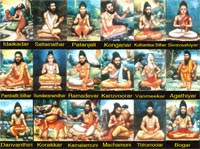The Siththars were living in the forests, mountains staying away from the common people because of their searches. We found evidences which show that the Siththars stay in the lonely places where the people can not enter easily. I have already shared the details about the mountains where the Siththars were staying and the importance of those mountains also. You can read that post in this link.
At the end of that post I have mentioned that I would share information about one of the mountains that was considered as the head quarters of the Siththars. As a sequence of it I am going to write about the Sivanmalai or Sathuragiri mountain in the upcoming days which is considered as the land of surprise.
If I start writing about the greatness of the Sathuragiri mountain, it may take even months to finish it up. I wish put to forth some of my ideas before I begin to write about the Sathuragiri mountain. As a continuation of these thoughts only I started writing this post.
Many of the have shared their experiences about the Sathuragiri mountain. All those are written with a commercial purpose only. For example it may be for the better sales of the books. Also to draw the attention and excitement of the readers they have exaggerated about the Sathuragiri mountain.
As a result of these exaggerations and rumours about the Sathuragiri mountain, the mountain is considered as a mysterious land and a place where the unusual people live. Apart from this, I believe that because of such exaggerations people make a mind block that it it impossible to reach to the medicinal herbs that is available on the mountains
My opinion is that rather than promoting it as a religious property that could increase the religious beliefs, they could attempt to spread the greatness of the Siththars who lived their, which could in turn be a benefit to the public.
We can see on the internet that most of the people have gone to the Sathuragiri mountain and have shared their experiences along with pictures. We can find the evidences that they are exactly showing the actual facts without any exaggerations. At times I feel proud about these friends who share the exact information without exaggerations. Even I decided to follow such people and write this post honestly. Though I did not find the chance of going out of Sri Lanka, I have found many books about the Sathuragiri mountain from the book collections of my grandfather.
I have decided to share only the information that the Siththars told about the Sathuragiri Mountain. You can expect many surprising information in this sequence about the Sathuragiri mountain. The rest of the information in the next post.
I also request you to share the details of this post to your friends also.
Original - www.siththarkal.com

